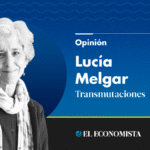Introduction to Financial Inclusion in Mexico
Financial inclusion is a crucial condition for the success of Mexico’s ambitious Plan, not just a desirable goal but a fundamental piece in the roadmap presented by President Claudia Sheinbaum and Altagracia Gómez Sierra. In a country where private credit from the banking sector accounts for only 25% of the GDP, far below comparable economies like Chile or Brazil, expanding credit access is urgent and strategic.
Current State of Credit Access in Mexico
According to the 2024 Entrepreneurship Radar in Mexico, 31.5% of businesses have never obtained any form of loan or credit. When examining reasons for lack of loans, the majority (77.2%) state they never sought or required credit. However, among those who have attempted to access credits or loans unsuccessfully, reasons for rejection include requesting higher income proof (38.6%), providing collateral (26.3%), and having a shorter operational history (23.7%). These factors highlight the importance of more attractive and affordable financial products for this economic sector.
Impact of Financial Inclusion
Financial inclusion directly reduces poverty and inequality by enabling more individuals and businesses to access formal financial services, contributing to the country’s economic and social development. At the Union of Mexican Financial Institutions (UNIFIMEX), we believe and work with our partners and the government to make financial inclusion a state policy, with clear, measurable objectives and active participation from all financial system actors.
Efforts Towards Financial Inclusion
Our commitment spans from digitalizing financial services, which can facilitate access to bank accounts, insurance, digital payments, and social programs for people in rural or marginalized communities without long-distance travel. We acknowledge the expansion of Banco del Bienestar and the strengthening of Financiera para el Bienestar (FINABIEN) as significant steps to deliver these services to historically excluded populations. However, by adding the substantial commitment of Mexican banks like Banco Azteca, Bancoppel, or Compartamos that cater to the lower-income segment, we can narrow the gaps more rapidly.
Moreover, digital identity through tools like Llave MX, under the Digital Transformation and Telecommunications Agency led by José Antonio Peña Merino, will be key to modernizing and digitizing processes that combat informality and bureaucracy for businesses. With secure digital identification, citizens can access governmental support, scholarships, and subsidies more efficiently, reducing cash dependency and increasing transparency.
Conclusion
In summary, democratizing access to financial services will accelerate the transition to a more just, modern, and inclusive economy—the very essence of Mexico’s Plan. However, the success of the Plan largely depends on our collective ability to build a functional financial system for every Mexican, especially those historically marginalized.
Financial inclusion is not merely a tool for economic growth; it’s a social justice expression and a prerequisite for democracy consolidation. At UNIFIMEX, we will continue to engage all financial system actors—from large banks to smaller institutions—whose commitment lies in advancing financial inclusion and building a true financial system serving all Mexicans.
Key Questions and Answers
- What is financial inclusion? Financial inclusion refers to the process of ensuring that all individuals and businesses have access to appropriate, affordable, and quality financial products and services.
- Why is financial inclusion important for Mexico’s Plan? Financial inclusion is crucial as it directly reduces poverty and inequality, contributes to economic development, and ensures a more just, modern, and inclusive society.
- What are the current challenges in accessing credit in Mexico? Only 25% of GDP comes from private credit, with 31.5% of businesses never having obtained a loan or credit. Rejection reasons include higher income proof, collateral requirements, and shorter operational history.
- What efforts are being made to improve financial inclusion in Mexico? Efforts include digitalizing financial services, expanding Banco del Bienestar and FINABIEN, and engaging lower-income segment banks like Banco Azteca, Bancoppel, and Compartamos. Digital identity tools like Llave MX are also being utilized to modernize processes and increase transparency.






